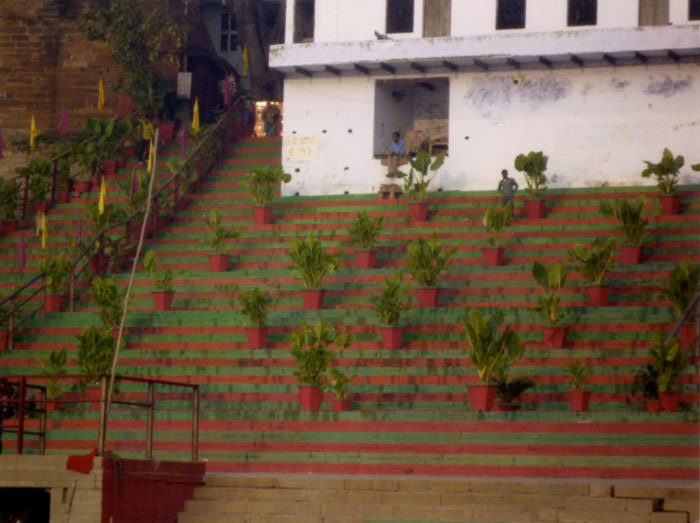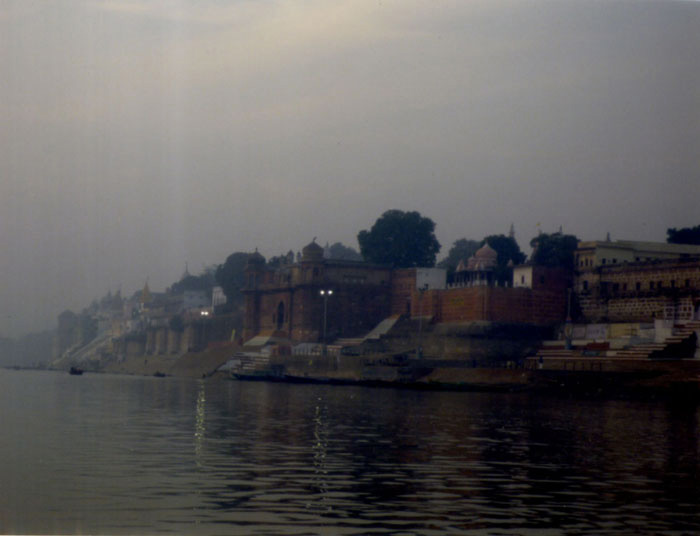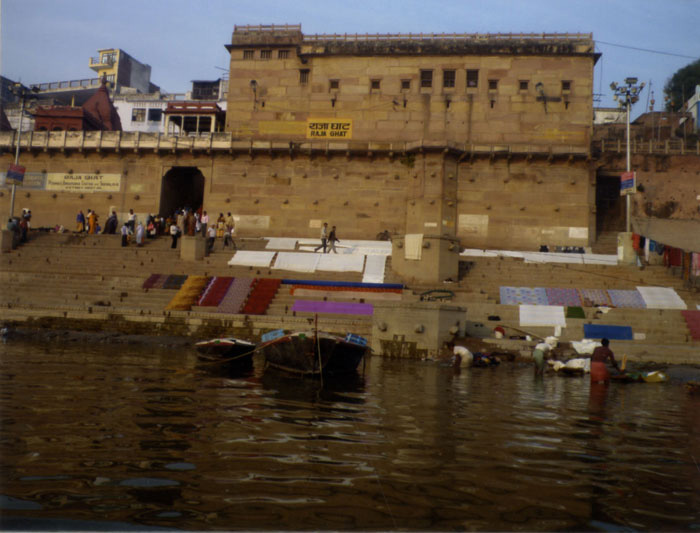The River – A visual poem
Film
Film Synopsis
Film short, The River, is part of a larger cinematic project about Professor Veer Bhadra Mishra and his life’s work of trying to cleanse pollution from one of the world’s greatest rivers, the Ganges.
As both an important religious leader (a mahant) and a hydraulic engineering expert, Professor Bhadra Mishra personifies the paradox challenging much of modern India, namely how ancient beliefs can coexist with modern science.
Filmed at Varanasi in 1998 and shot on DV CAM and mini DV, The River gives a glimpse of daily life on the banks of this sacred artery in one of India’s holiest cities, from sunrise to full moon.
The River begins early in the morning, with countless bathers washing or offering devotional prayers (puja). Then travelling along the ghats, we see how people interact through the day with the Ganga Mata, the great goddess, as they pray, perform ritual ablutions and launder their clothes while children dive for cockles. Life and death coexist here comfortably so, while fishermen pursue their catches, ancient Hindu cremation rituals are observed at the Harischandra ghat, leaving prayer garlands bobbing on the swell.
But there is a darker side to life by the holy river… Overwhelmed by a burgeoning population and archaic sewage systems, domestic effluent pours directly into the river where people bathe and pray. Varanasi is where the professor lives and he’s devoted his life to finding a solution that will sustain the millions of people and creatures who depend upon this river, not just locally but for all 2,500 kilometres of its course. It’s a profound challenge that’s fuelled as much by his religious dedication as it is by decades of specialised scholarship within his field.
As dusk gathers, the film moves on to Haridwar to capture the festival of Kumbha Mela, a spectacle that takes place every twelfth year in one of four cities. The world’s largest religious gathering, Kumbh Mela is a sacred Hindu pilgrimage in which millions of devotees cleanse their sins through ritual bathing in sacred rivers and, at Haridwar, that river is The Ganges. The festival takes place when the sun is in Aries and Jupiter is in Aquarius and lasts for 54 days… and in 1998, over 10 million pilgrims visited Haridwar, including holy men and women such as sadhus clad in saffron and daubed with ash, and sannyasins who, having renounced all material things, wear nothing – even during winter. As singing and religious activity builds to a crescendo, The River closes with a vast and peaceful crowd purging their sins by performing arthi : bathing in this majestic river beneath a full moon.
History of Kumbha Mela
Kumbha Mela or ‘Aquarius gathering’ is the most sacred of all Hindu pilgrimages, where devotees bathe in the holy river Ganges at a specific time and place in order to purify themselves.
Originating with the Rig Veda, the world’s oldest religious text, as well as from accompanying Puranas and from mention by the Buddha himself, it is a river festival that commemorates an ancient struggle between the devas and asuras (gods and demons).
Having churned up the oceans, many things emerged including the nectar of immortality (or amrit) accompanied by a deadly poison strong enough to destroy the universe. Unsure how to rid themselves of the poison, the gods and demons brought it to Shiva who drank and neutralised it, using his immense yogic power. There then ensued a fight to possess the nectar and, as Indra’s son, Jayant, ran away with the vessel holding it, a few drops of nectar fell to the ground at Haridwar, Prayagraj, Ujjain and Nashik. The battle between the devas and asuras lasted twelve days (each day equivalent to a human year), which is why the holy festival of Kumbha Mela is celebrated every twelfth year at one of these four sacred sites.


